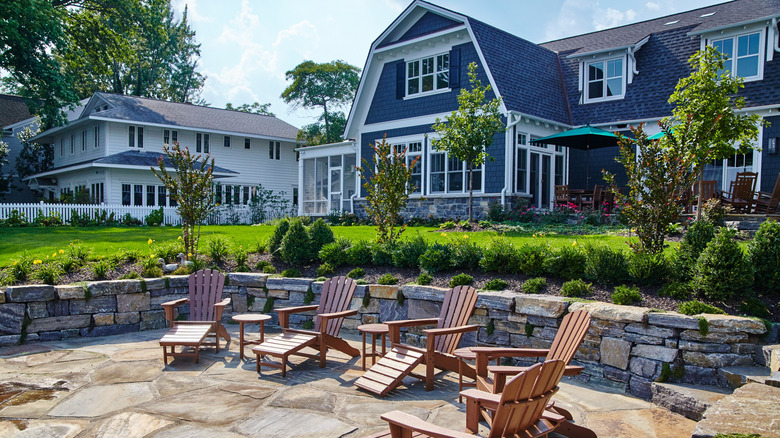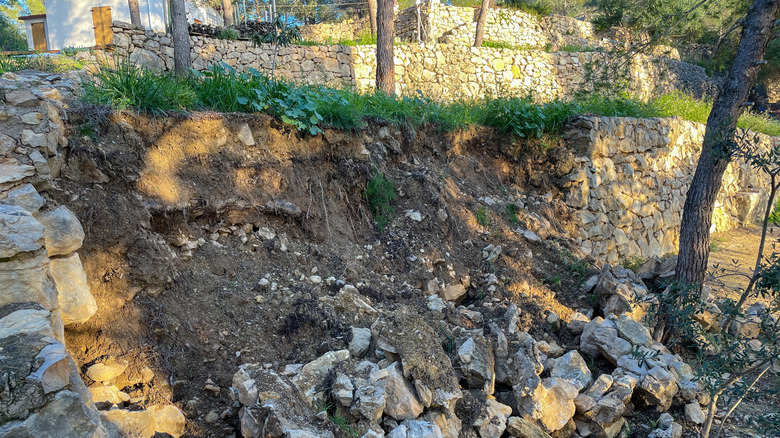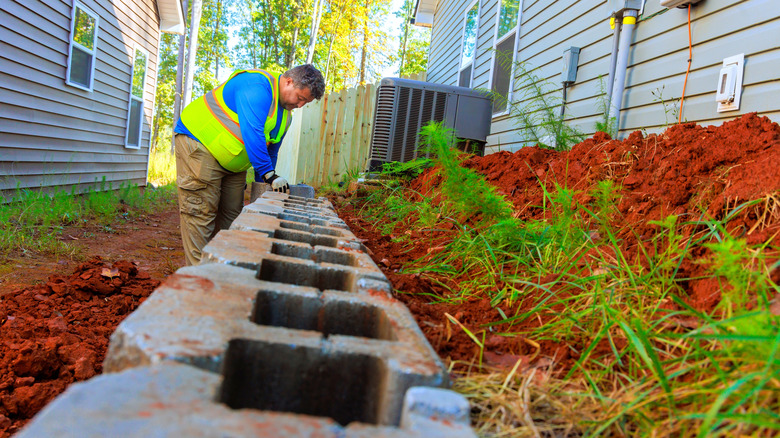The Commonly-Overlooked Mistake That Will Cause Your Retaining Wall To Collapse
While retaining walls can serve an aesthetic purpose, they primarily function as a barrier to hold back soil and prevent erosion, creating stable elevated areas. Like every project, there are do's and don'ts of building a retaining wall, and when installed correctly they can provide years of durability and reliability. However, there is a big mistake often made when building a retaining wall that can lead to structural failure. It isn't using the wrong materials or employing improper construction techniques — it's failing to install an adequate drainage system.
A retaining wall has to resist immense pressure from the weight of the soil, but what many people fail to consider is the added force of water accumulation, also called hydrostatic pressure. This often goes unnoticed until warning signs, such as slight bulging, cracks, or leaning, appear. By the time these become visible, the damage is likely already extensive. Without intervention, your wall will eventually collapse, sending all that soil cascading downward and potentially causing costly damage to landscaping, driveways, or even nearby structures.
Why poor drainage is a retaining wall's worst enemy
Water has a sneaky way of infiltrating soil, especially during heavy rain or snowmelt. Without a proper system to redirect this water, pressure builds up behind the wall, creating stress far beyond what the structure was designed to handle. Unlike visible structural problems, drainage failures happen gradually, weakening a retaining wall over months or even years before an obvious failure occurs. Eventually, this continuous force causes the structure to push outward, which can show up as anything from minor cracks to complete destabilization.
Beyond sheer pressure, water also disrupts the integrity of the wall's foundation. Inadequate drainage can lead to soil displacement, meaning the base of the wall no longer has the compacted, stable ground it needs for support. If the footing begins to erode or sink, the entire structure shifts, tilting forward or even breaking apart in sections. If that's not enough of a concern, drainage issues also encourage what's called frost heaving in colder climates. When water trapped in the soil freezes it expands, creating unpredictable pressure points that force individual wall segments to separate. With each freeze-thaw cycle, this movement becomes more pronounced, worsening the wall's instability.
Proactive solutions to prevent retaining wall failure
The good news is that drainage-related failures are entirely preventable. The most effective strategy is to allow water to escape before it builds up behind the wall. One of the best ways to achieve this is by incorporating a well-designed backfill system. Using crushed stone or gravel instead of compacted soil behind the wall ensures water can flow freely rather than getting trapped. This material should extend at least 12 inches behind the wall to create an effective drainage buffer.
Beyond the backfill, a perforated drainage pipe, often called a French drain, should be installed at the base of the wall. This pipe collects excess water and redirects it away from the structure, preventing pressure buildup. The pipe should be wrapped in a geotextile fabric to prevent clogging and buried at a slight angle to encourage proper flow. In addition to subsurface drainage, weep holes can be incorporated into the design of solid walls, providing small openings in the wall itself that allow water to drain out naturally rather than accumulating behind the surface.
For added protection, proper site grading is essential. The landscape should be designed so water naturally flows away from the retaining wall rather than toward it. If you plan to build a DIY retaining wall in your sloped backyard, sloping the ground slightly downward in the opposite direction helps prevent excess moisture from pooling near the base. By implementing these drainage solutions from the beginning, a retaining wall can maintain its strength for decades.


